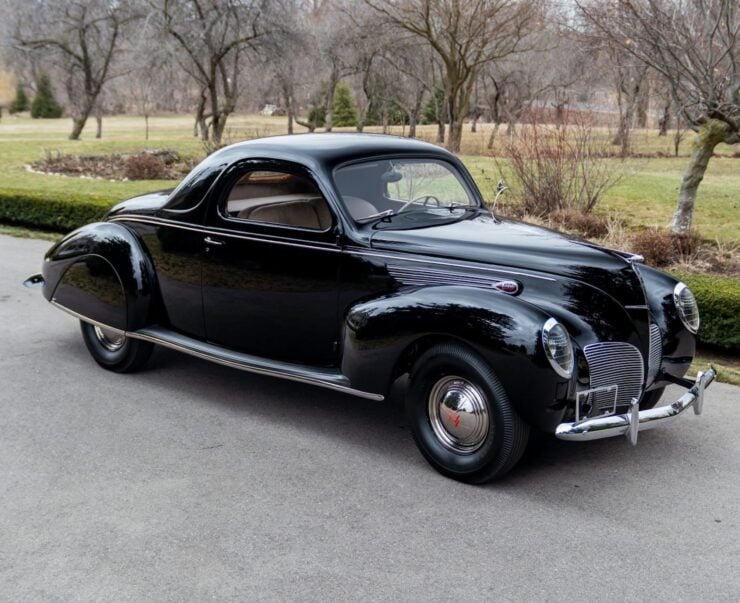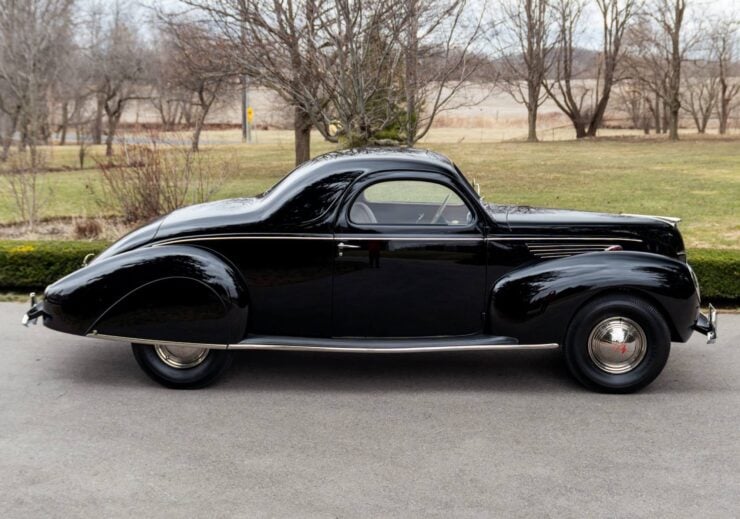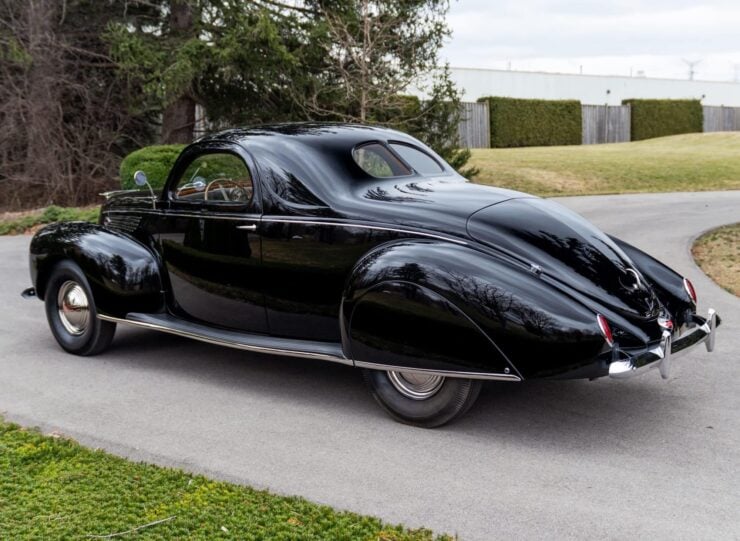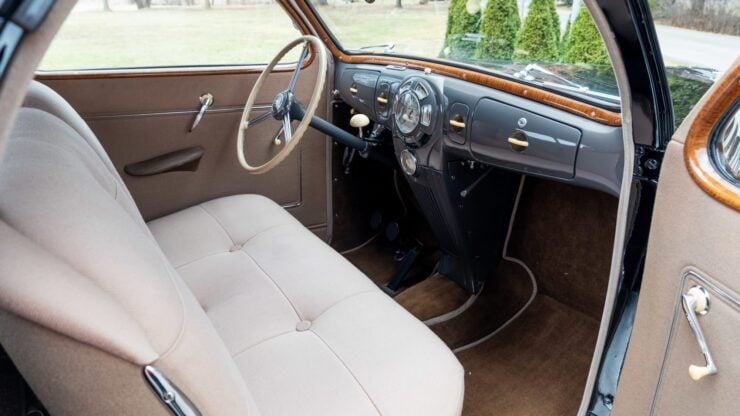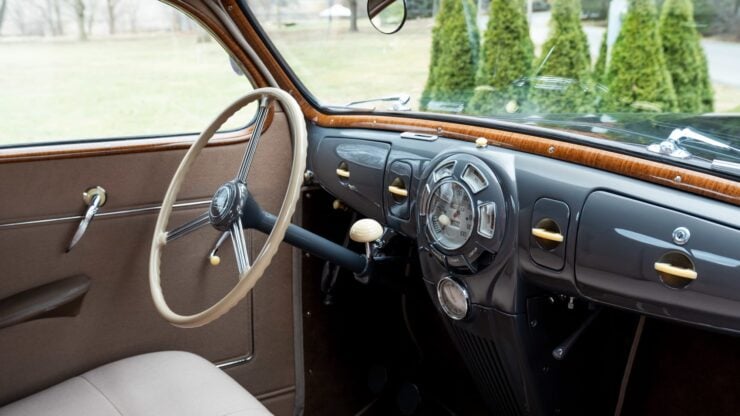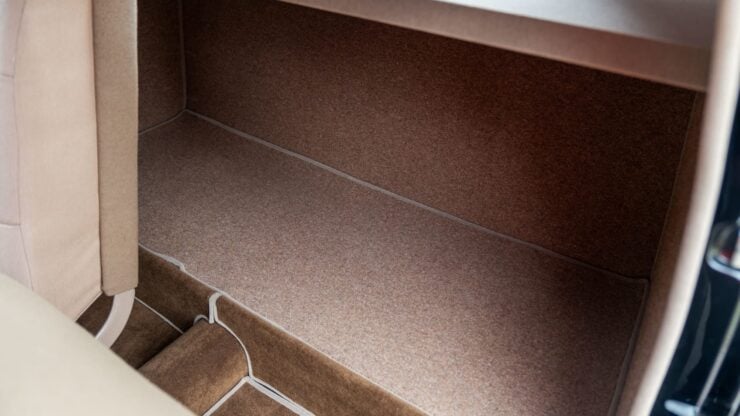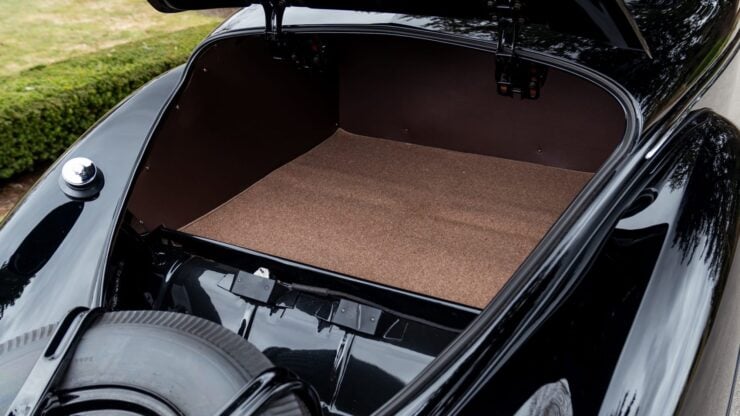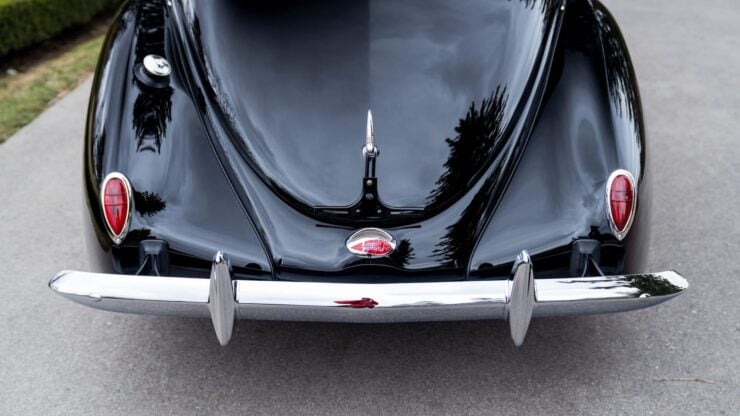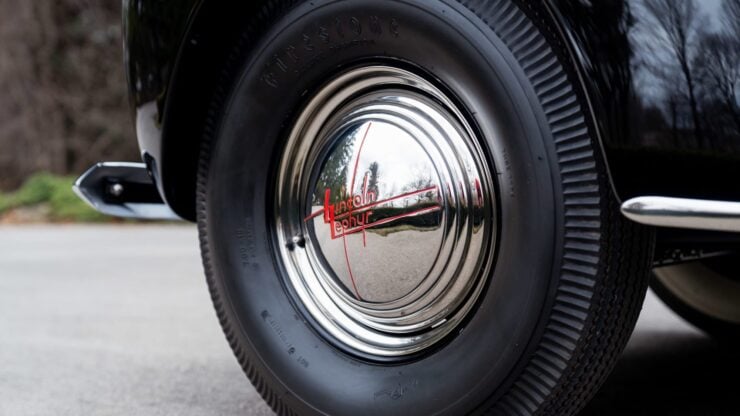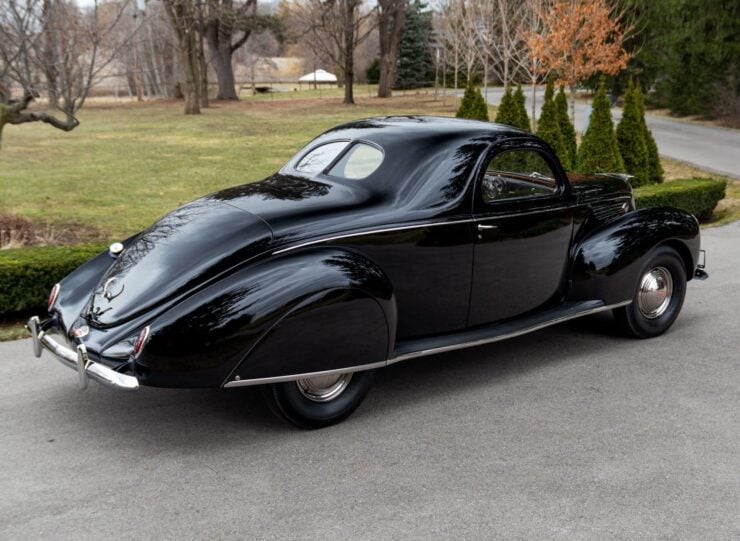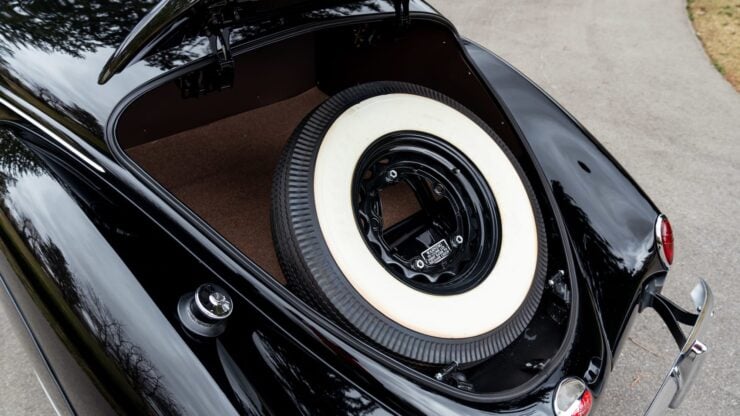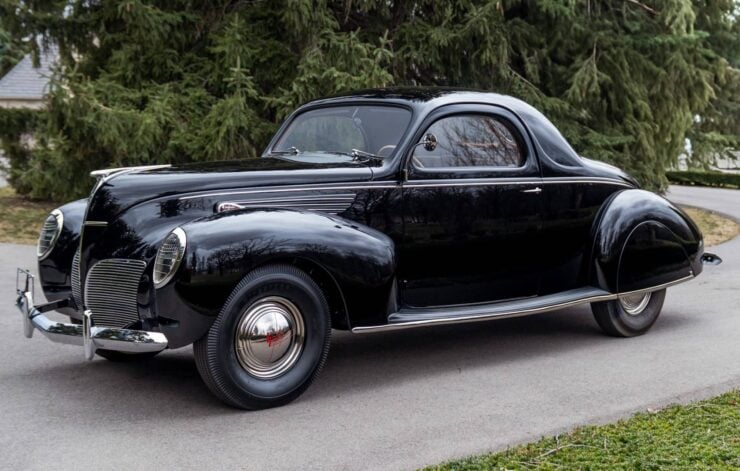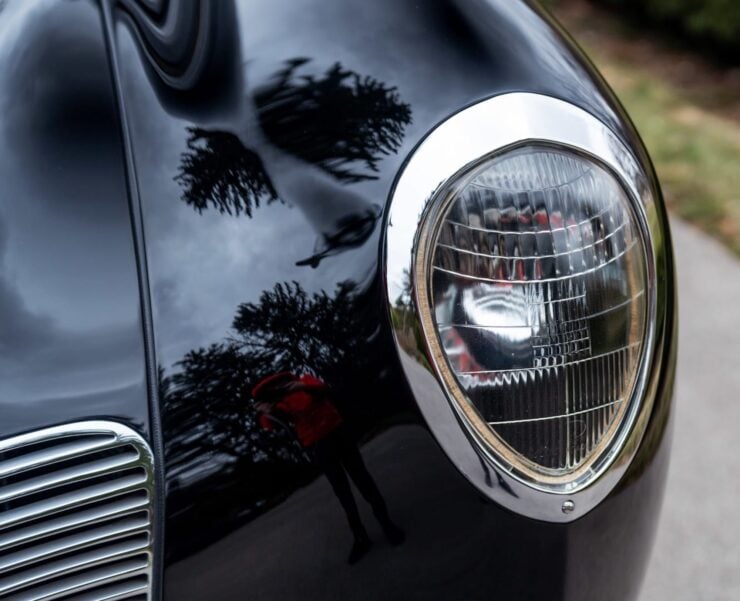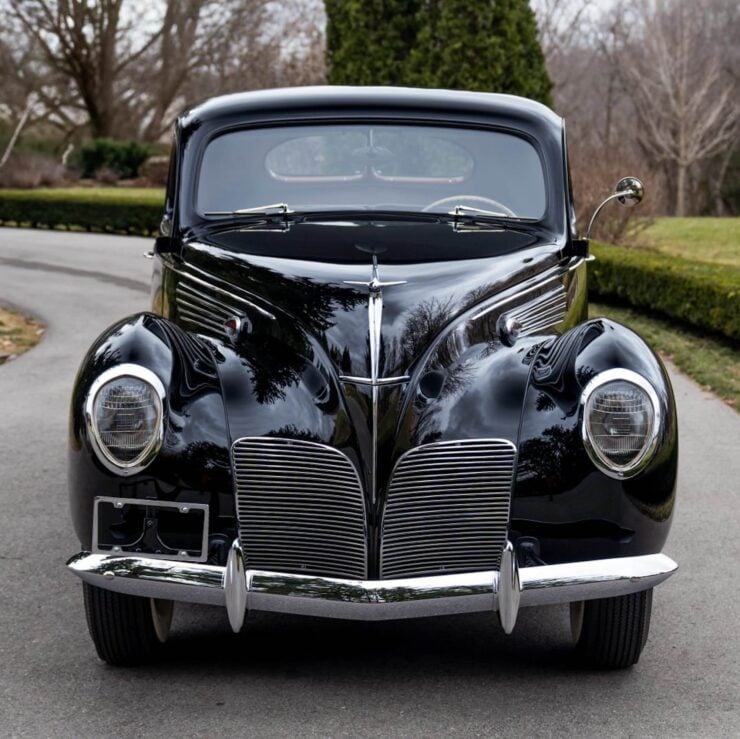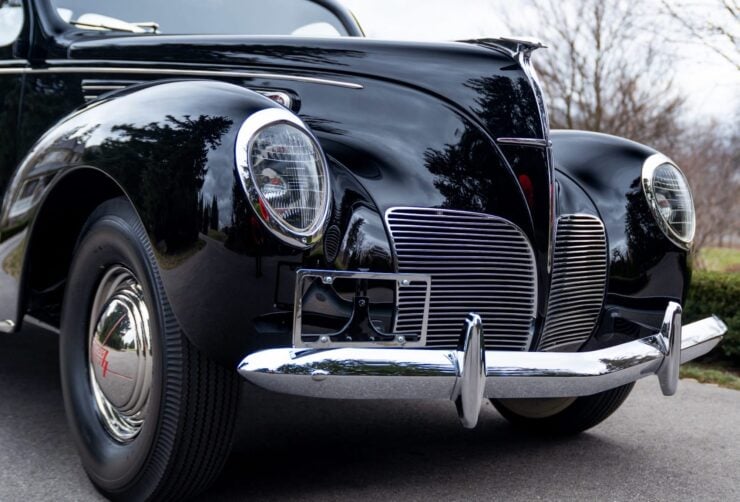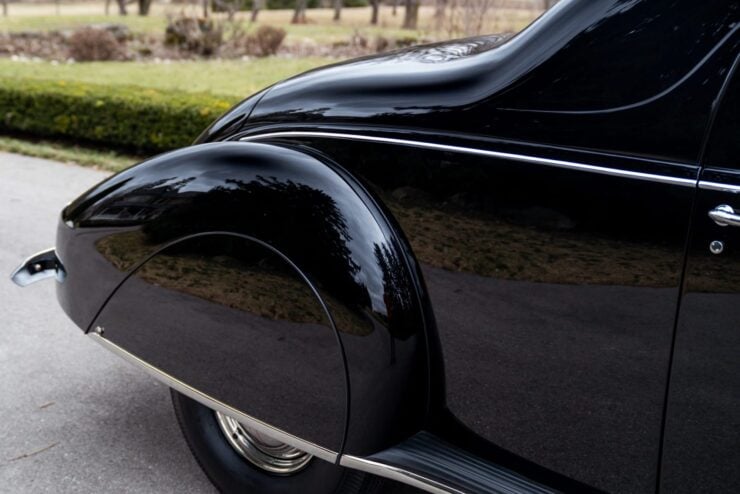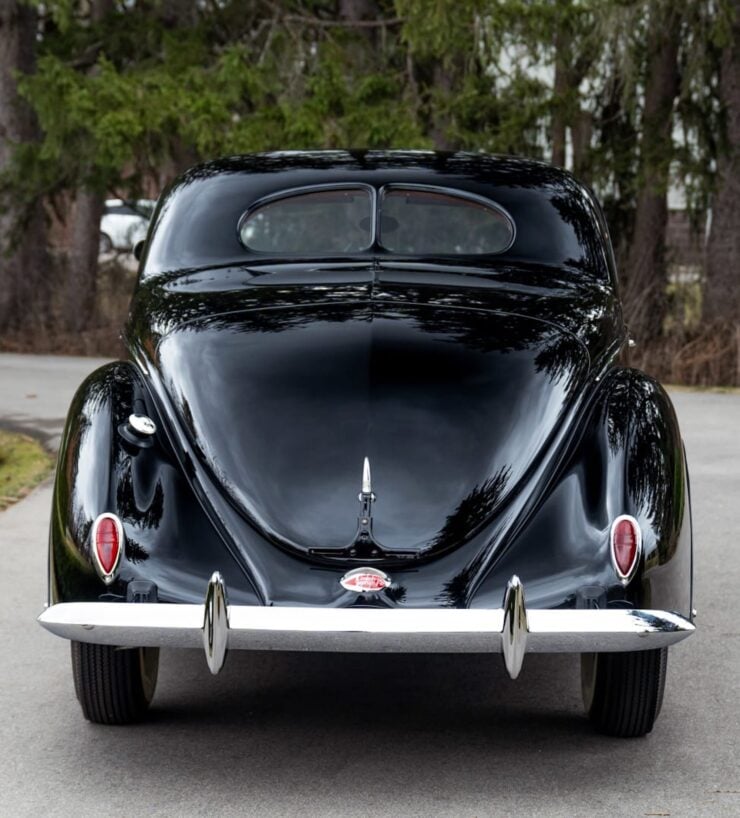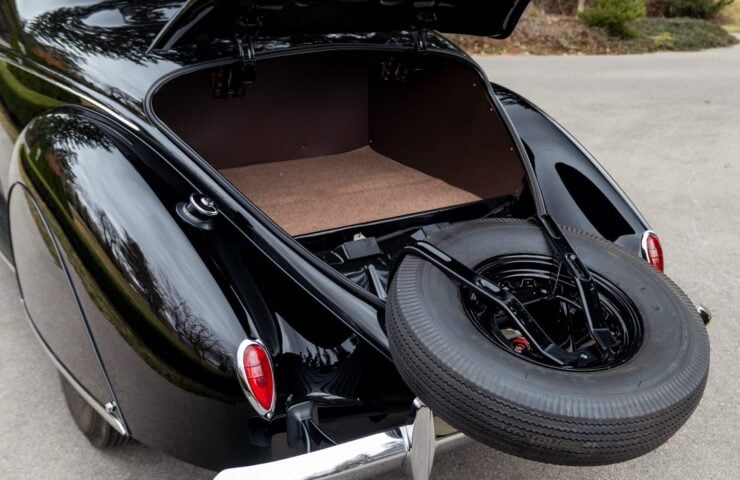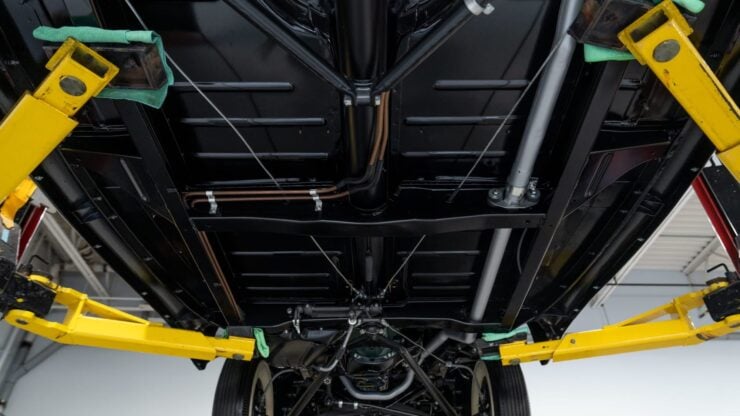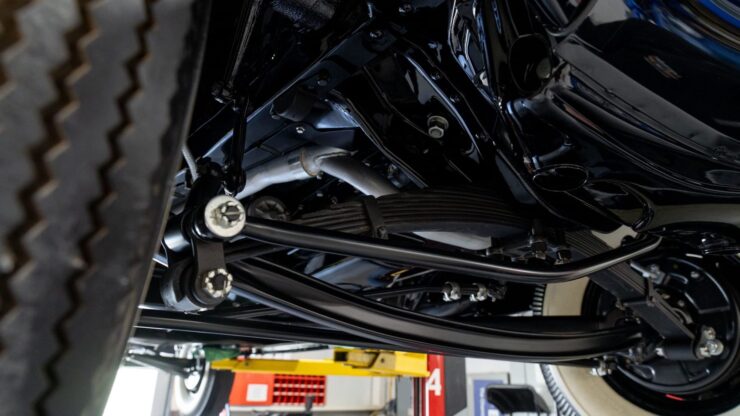This is a 1938 Lincoln Zephyr Coupe, and it may very well be the best example of its kind in the world, having won awards at Pebble Beach Concours d’Elegance and many other major events.
The Lincoln Zephyr was powered by an American-made V12 engine, the Lincoln-Zephyr H-series V12. It was a smooth, powerful engine that offered a high-end alternative to car buyers, above the likes of the Ford V8 DeLuxe.
Fast Facts: The 1938 Lincoln Zephyr V12 Coupe
- The Lincoln Zephyr Coupe is a luxury car best-known for its aerodynamic styling and futuristic design, influenced by aviation trends of the 1930s. Designed by John Tjaarda and refined by Edsel Ford’s lead stylist Bob Gregorie, its distinctive curved design marked a significant departure from the vehicles common in that era.
- Powered by the Lincoln-Zephyr H-series V12 engine, it offered affordable access to the prestige of twelve-cylinder motoring. Initially 267 cubic inches, producing 110 bhp and a broad torque curve, it faced early issues with overheating and sludge buildup, later mitigated by design improvements including hydraulic valve lifters.
- The Zephyr competed directly against mid-priced luxury rivals such as Buick, Chrysler Airflow, and Packard’s junior models, successfully carving out a market niche despite the challenging economic conditions of the late 1930s. Sales exceeded 130,000 units before production halted due to WWII.
- The particular example highlighted here is acclaimed as possibly the world’s best-preserved 1938 Zephyr Coupe, having won prestigious awards including at Pebble Beach Concours d’Elegance and Lincoln-Zephyr Owner’s Club Nationals. A meticulous, half-million-dollar restoration underscores its exceptional quality and collectability, marking it as a historically significant automotive masterpiece.
The Lincoln-Zephyr H-series V12
This is a Lincoln-Zephyr V12 H-series engine that would have been built between 1936 and 1948 as the powerplant for the Lincoln-Zephyr line of midsized luxury cars.
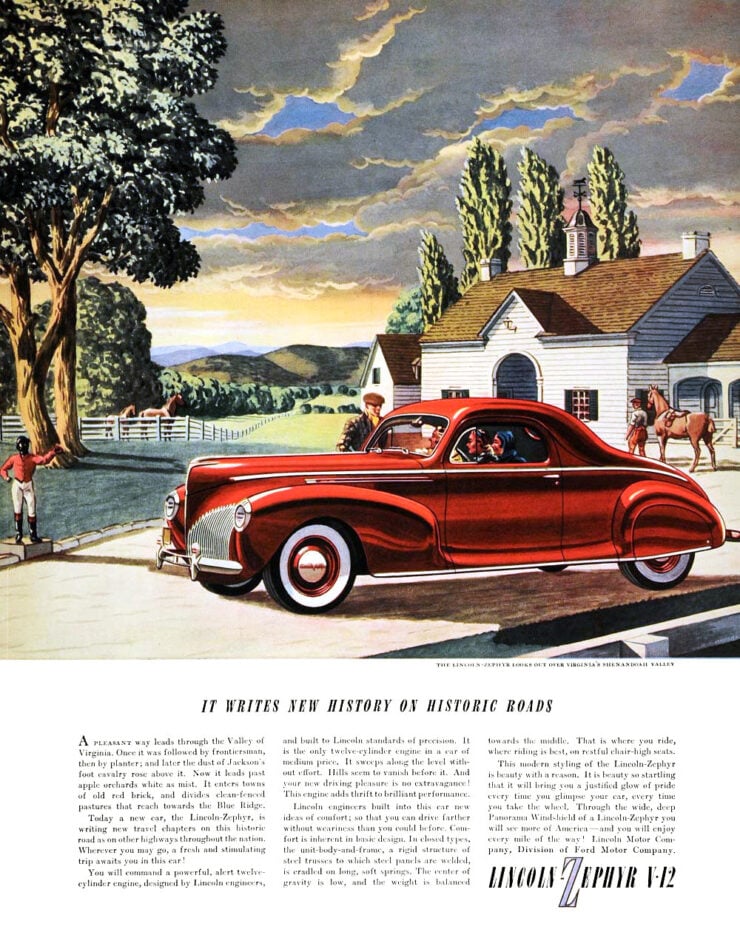

The H-series V12 owes much of its design to the earlier Ford Flathead V8 engine that debuted four years earlier in 1932. While the two engines share no parts in common the 75° V12 is a direct descendant of the 90° Flathead V8, and after some early teething troubles, both engines would establish a reputation for reliability.
The Lincoln-Zephyr H-series V12 was developed specifically to power the new Lincoln-Zephyr line of more affordable luxury cars, a model line that would sit below the high-end Lincoln Model K, and above the Ford V8 DeLuxe.
The first version of the H-series V12 had a displacement of 267 cubic inches (4.38 liters) and used aluminum heads, dual coolant pumps, dual coils (one for each bank), and cast-steel pistons.
The engine was capable of 110 bhp at 3,900 rpm, a relatively high engine speed for the time, particularly in a flathead. Torque topped out over 190 lb ft, and a minimum of 180 lb ft was available from 400 rpm all the way up to 3,500 rpm – a remarkably flat torque curve.
Early versions of the engine did suffer some issues that led to a reputation for unreliability. Sludge buildup caused by poor crankcase ventilation and low-rpm running could lead to overheating.
Most vehicle owners at the time weren’t used to accessing power at higher rpms, and so many kept the revs low and suffered the consequences. Other issues were caused by coolant passages that were too narrow, which would also lead to overheating, resulting in bore warpage and ring wear.
Ford/Lincoln engineers rapidly addressed these issues, switching to hydraulic valve lifters and adopting a series of modifications to keep the engines running cooler and avoid overheating.
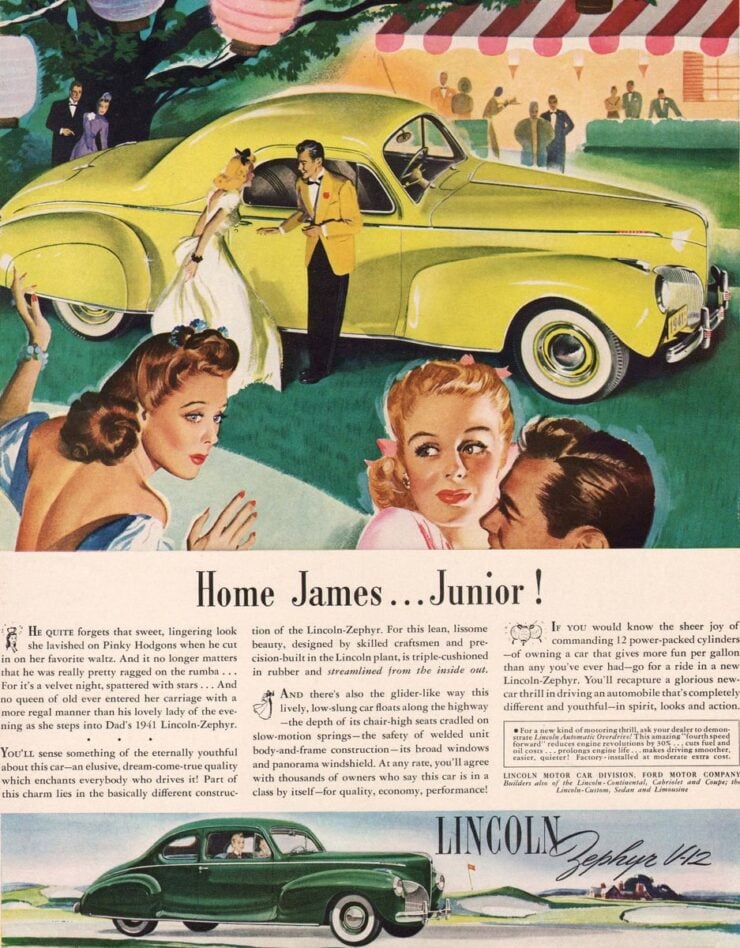


The engine was enlarged to 292 cubic inches (4.79 liters) for 1940. Due to the United States joining WWII in 1941 the engine would leave production while the factory shifted over to helping with the war effort. It would resume production in the same specification in 1946, after the war had ended and civilian production was ramping up once again.
There was one other version of the engine made, though in far lower numbers, it had a displacement of 306 cubic inches (5.0 liters) and it was made for a single month in 1942, and it was resurrected after the war for a short time before production switched over to the earlier 292 cubic inch version.
Although the Lincoln-Zephyr H-series V12 is far rarer than the Ford Flathead V8, it has become a feature, albeit an uncommon one, in the custom car scene. There are specialists who can rebuild them to reliably produce 250+ bhp, like H&H Flatheads in La Crescenta, California.
The Lincoln-Zephyr
The Lincoln-Zephyr’s development began in the early 1930s, it was influenced heavily by the automotive industry’s growing embrace of aerodynamics, which in turn had been influenced by the growing embrace of aircraft and air travel.



The vehicle’s name “Zephyr,” derived from the Greek god of the west wind, was chosen to underscore its streamlined, modern design – quite revolutionary for the time. Designed by Dutch-born stylist John Tjaarda and refined by Edsel Ford’s trusted designer, Eugene Turenne “Bob” Gregorie, the Zephyr had a curved, teardrop-inspired body.
Its appearance was a radical departure from the boxy, upright styling common among American cars during the Great Depression era, and it would be a sign of things to come.
Under the hood, the Lincoln-Zephyr debuted with a compact V12 engine, the H-series V12, which became one of its most distinctive features. It offered customers an affordable entry into twelve-cylinder motoring, a distinction usually reserved for higher-priced luxury vehicles from Cadillac and Packard.
Upon its introduction, the Zephyr faced intense competition from similarly priced vehicles. Buick, with its refined styling and well-established brand image, Chrysler’s Airflow – another aerodynamically advanced car– and Packard’s junior models, including the successful Packard 120, presented genuinely appealing alternatives to prospective buyers.
While Chrysler’s Airflow struggled commercially due to overly avant-garde styling, Buick and Packard enjoyed strong sales, challenging the Zephyr. Lincoln dealers managed to carve out a niche for the Zephyr by appealing to customers desiring a vehicle with modern styling and prestigious brand name at a competitive price point.
Sales of the Zephyr were relatively good from the outset, particularly considering the lingering economic challenges of the mid-to-late 1930s and the effects of The Great Depression. The car’s relative affordability, combined with its styling and prestige, seemed to work well with consumers who wanted the trappings of luxury but were mindful of price. Between 1936 and 1942, Lincoln sold over 172 Zephyrs, significantly increasing Lincoln’s market penetration compared to the earlier high-end-only offerings.
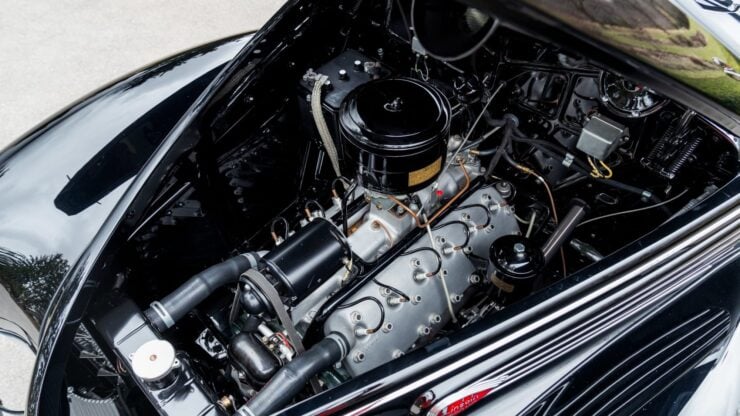


Production of the Zephyr halted in 1942 due to the US involvement in World War II, after which Lincoln chose not to revive the nameplate in the postwar market.
Instead, it transitioned toward new designs and model strategies. Despite its relatively short production run, the Lincoln-Zephyr left an indelible mark, and it remains a favorite with pre-WWII collectors today.
The 1938 Lincoln Zephyr V12 Coupe Shown Here
The vehicle you see in this article is the finest 1938 Lincoln Zephyr we’ve seen in recent memory. The judges at the Pebble Beach Concours d’Elegance certainly agreed, as it was awarded there.
It’s also a Best of Show and Peter Gregory award winner at the Lincoln-Zephyr Owner’s Club Nationals, additionally, it was awarded AACA Junior and Senior honors.
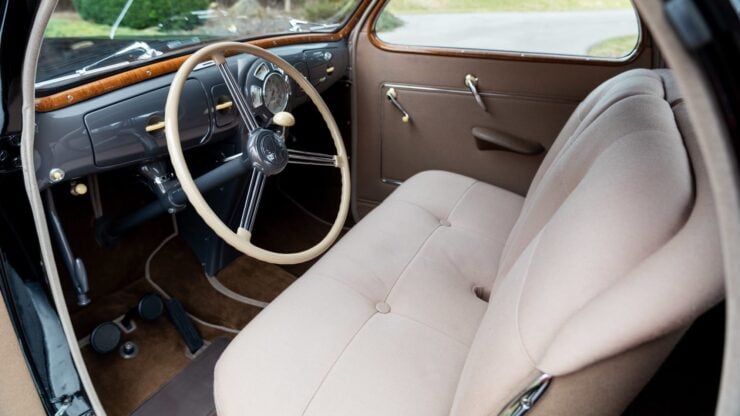


It was given a comprehensive no-expense-spared nut and bolt frame-off restoration by a marque specialist, and the listing notes that restorations to this level generally cost over $500,000 USD. It’s hard to argue that this isn’t one of the most beautiful American coupes of the time, maybe the most beautiful outright.
It’s now due to roll across the block with Mecum in mid-May at their Indy Auction. If you’d like to read more about it or register to bid you can visit the listing here.
Images courtesy of Mecum
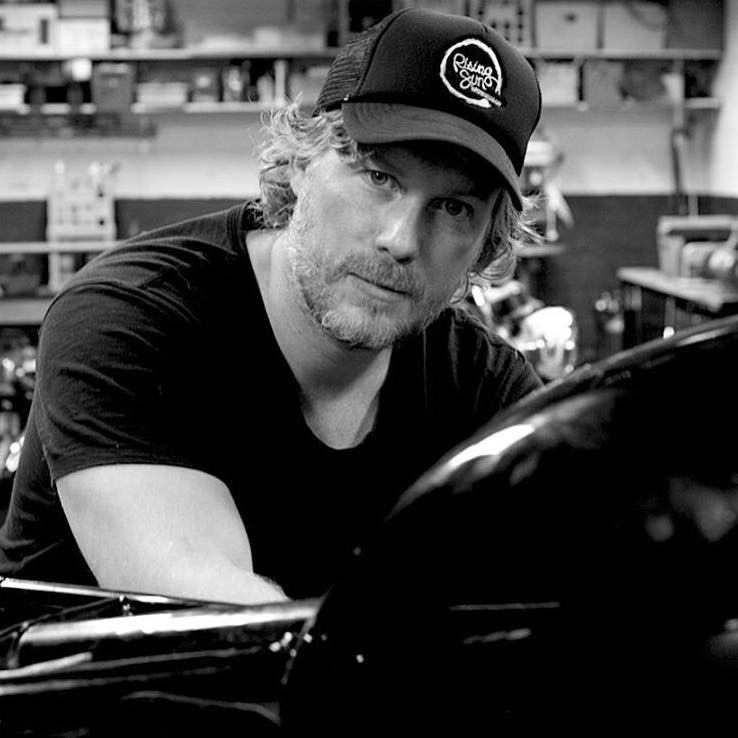

Articles that Ben has written have been covered on CNN, Popular Mechanics, Smithsonian Magazine, Road & Track Magazine, the official Pinterest blog, the official eBay Motors blog, BuzzFeed, Autoweek Magazine, Wired Magazine, Autoblog, Gear Patrol, Jalopnik, The Verge, and many more.
Silodrome was founded by Ben back in 2010, in the years since the site has grown to become a world leader in the alternative and vintage motoring sector, with well over a million monthly readers from around the world and many hundreds of thousands of followers on social media.


